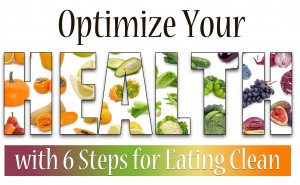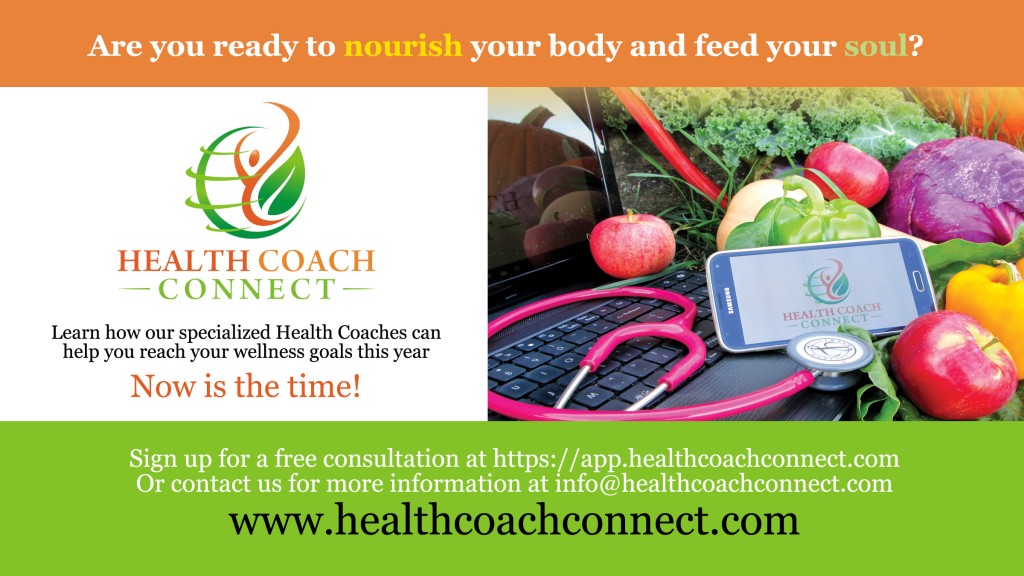Eating clean is choosing the most natural food sources available, those that are closest to real food (and the ground) as possible. Nowadays, much of our food supply has been processed and gone through so much handling that, by the time you eat it, it is devoid of nutrients. Marketing and packaging may make you think differently, so it’s important to stay informed about what you are putting into you body.
1. Avoid processed foods.
Let’s discuss the definition of processed foods. According to foodinsight.org, processed foods are defined as “any deliberate change in a food that occurs before it’s available for us to eat. It can be as simple as freezing or drying food to preserve nutrients and freshness, or as complex as formulating a frozen meal with the right balance of nutrients and ingredients. You can find processed foods in a: bag, box, jar, can or any other container you can think of. Basically, if it is not in its whole form it is processed. For example, a French fry is not a whole food (or a vegetable), but the potato is.
Processing foods began about 2 million years ago with the discovery of fire, and food technology has advanced with the innovation of fermentation, canning, jarring, freezing, preserving and dehydrating. Later came factories, and today many processed foods contain chemicals, dyes, preservatives and a whole slew of other things that most of us can’t pronounce, which are unusable and unhealthy in our body. Eating processed foods has been linked to many diseases including cancer, heart disease, diabetes, autoimmune diseases, and many others.
2. Eat whole foods.
Whole foods are those foods that are in their natural state, as close to coming out of the ground as possible. When we choose whole foods, we are getting the nutrients our body needs in order to be healthy. Whole foods mainly include plant-based foods such as vegetables, fruits, nuts, seeds, legumes and whole grains. A whole foods diet can provide you with all of the nutrients you need for optimal health.
3. Avoid sugar.
A study in 2015 found that sugar was actually more addictive than cocaine and 94 percent of mice actually chose sugar over cocaine. According to Nancy Appleton, author of “Lick the Sugar Habit,” sugar can wreak havoc on the body, suppressing the immune system, causing mood shifts and hyperactivity, feeding cancer cells, causing obesity and more!
Sugar is in almost everything we eat, from the obvious sweets, to the not-so-obvious salad dressings, frozen meals, canned and dried fruit and even white wine. Packaged foods can be sneaky in their use of sugar, so read the labels. And know your numbers: 4.2 grams of sugar is equal to 1 teaspoon. One cup of cola has 44 grams of sugar, which is equal to 10 teaspoons of sugar!
4. Cook at home.
Cooking at home can give you more control over what you’re eating because you can read the labels, choose what goes into your meal and prepare it with love. Eating at home empowers you to eat less processed foods and refined sugar, know where your meals come from, spend quality time with family and save on your monthly budget.
Plan ahead each week and prepare a menu for a couple nights if you’re new to eating at home. You can even prepare your meals ahead of time. If you choose a rice dish, for example, prepare it on Sunday for Tuesday’s meal. If you tend to eat lunch on the go, get into the habit of packing your own lunch. Make your lunch the night before or eat leftovers for lunch. Once you get into the habit, it will become second nature.
5. Think differently about meat.
I want to invite you to begin looking at your meals in a new way. We are accustomed to planning our meals around meat. Now try planning your meals around your veggies. Include smaller portions of meat and make the rest of the plate a colorful rainbow.
We live in a time when much meat is farmed with unethical and improper practices. Animals are fed hormones to increase their growth and milk production. They are given antibiotics to prevent them from getting sick and to kill of the vast amounts of bacteria they encounter while being caged with thousands of other animals. Cattle also are fed grain, rather than grass, which their bodies cannot digest and lacks nutrients.
Is this the kind of meat you want to put in your body? If you choose to eat meat, choose animals that are organically grass fed with no hormones or antibiotics. Go one step further and try a meatless day of the week! You might be surprised how good you can feel with less meat in your life! Not only will it benefit you, it will also reduce your carbon footprint.
6. Eat fruits and vegetables, mostly organic.
Each meal should consist at least 50 percent colorful fruits and vegetable. You’ve heard the saying, “You are what you eat.” When we eat live foods, it gives us energy and aliveness. It fuels our cells with the nutrients we need for survival and optimal health. Live foods are rich in water that will hydrate you as well. When you consume a vast array of colorful fruits and veggies daily, you are providing your body with a wide range of specific vitamins, minerals and antioxidants. Have fun with it and give your veggies new meaning!
What is the hype with organic? According to the USDA, “Organic food is produced by farmers who emphasize the use of renewable resources and the conservation of soil and water to enhance environmental quality for future generations. Organic meat, poultry, eggs, and dairy products come from animals that are given no antibiotics or growth hormones. Organic food is produced without using most conventional pesticides; fertilizers made with synthetic ingredients or sewage sludge; bioengineering; or ionizing radiation. Before a product can be labeled “organic,” a government-approved certifier inspects the farm where the food is grown to make sure the farmer is following all the rules necessary to meet USDA organic standards.
Why is this important? Choosing to eat organic will help keep the toxins out of the soil, the water, the air and your body. According to research, traditional farming practices result in heavy buildups of toxic chemicals that have been known to cause disease, including cancer, autism, asthma and more. You might be thinking that organic is more expensive, but in the long term it is less expensive than large medical bills.
If you can’t work it in the budget to go totally organic, use the “Dirty Dozen” list below to buy organic for the most heavily pesticide-laden fruits and vegetable:
- Strawberries
- Apples
- Nectarines
- Peaches
- Celery
- Grapes
- Cherries
- Spinach
- Tomatoes
- Sweet bell peppers
- Cherry tomatoes
- Cucumbers
Here’s to a cleaner, healthier you this spring.
Stacy Musial is president of Health Coach Connect and a Licensed Clinical Social Worker with a passion for whole-person wellness. She received her Bachelor’s and Master’s degrees in Social Work at Colorado State University and has been providing mental health therapy to individuals in community mental health, private practice and online therapy venues. She began her journey into health when she realized her own was not optimal and it impacted the way she felt physically, emotionally and spiritually. Her journey led her to earn a certificate from the Institute for Integrative Nutrition.® She enjoys running, biking, yoga and fermenting yummy foods. Visit Health Coach Connect online at healthcoachconnect.com.


